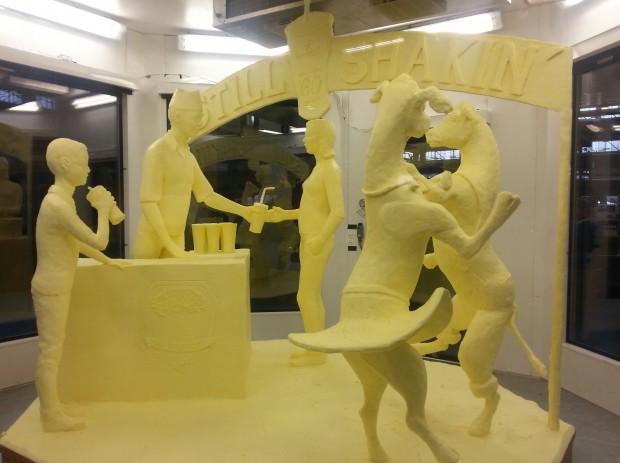How art becomes energy: the fate of the Farm Show’s 1,000-pound butter sculpture
-
Marie Cusick

Courtesy: Pa. Dept. of Agriculture
This year’s butter sculpture was crafted by Jim Victor of Conshohocken. It’s an homage to milkshakes. Pa. Dept. of Agriculture
As a winter storm bears down on the Northeastern U.S., a bad forecast in the new year is better known to Pennsylvanians as “Farm Show weather.”
Beyond bad weather, the Farm Show also brings butter– lots of it.
Each year its molded into a massive new sculpture, which remains refrigerated and on view to thousands of visitors during Farm Show week in Harrisburg.
But given the ephemeral nature of butter, it has a higher purpose. Once again this year, the butter will be melted down at the end of the week and dumped into a manure pit at a Juniata County dairy farm.
As StateImpact Pennsylvania alum Scott Detrow reported last year, the butter is transformed into three-days worth of energy:
Turns out, butter becomes gas through the work of a methane digester.
Glenn Cauffman, the manager of Penn State University’s Farm Operations, said the butter will be dumped into a big heated tank where microorganisms will feast on it. “Those microorganisms can break those fat molecules apart into the less complex molecules,” he explained. “Then further take that to produce a gas called methane, which burns readily in an engine, and can be converted into…electricity.”
As long as the farmer keeps the digester hot, the bacteria will do all the work. “Those organisms at a hundred degrees, are working hard,” said Cauffman. “They’re trying to live. They’re trying to reproduce. They’re trying to eat food, be happy, make more bacterial.”
Steve Reinford is the lucky dairy farmer who will take custody of the sculpture. He’ll be the one dumping it into the manure pit, where it will sit for several days, before he grinds it into fuel and feeds it into the digester.
Reinford said it will take about five days to load the butter/manure mix into the tank. “And as it’s heating it’s breaking down. It’s going to take probably up to 25, 30 days to break it down completely. And that will make the methane. And then I’m going to run a generator,” he said.
















